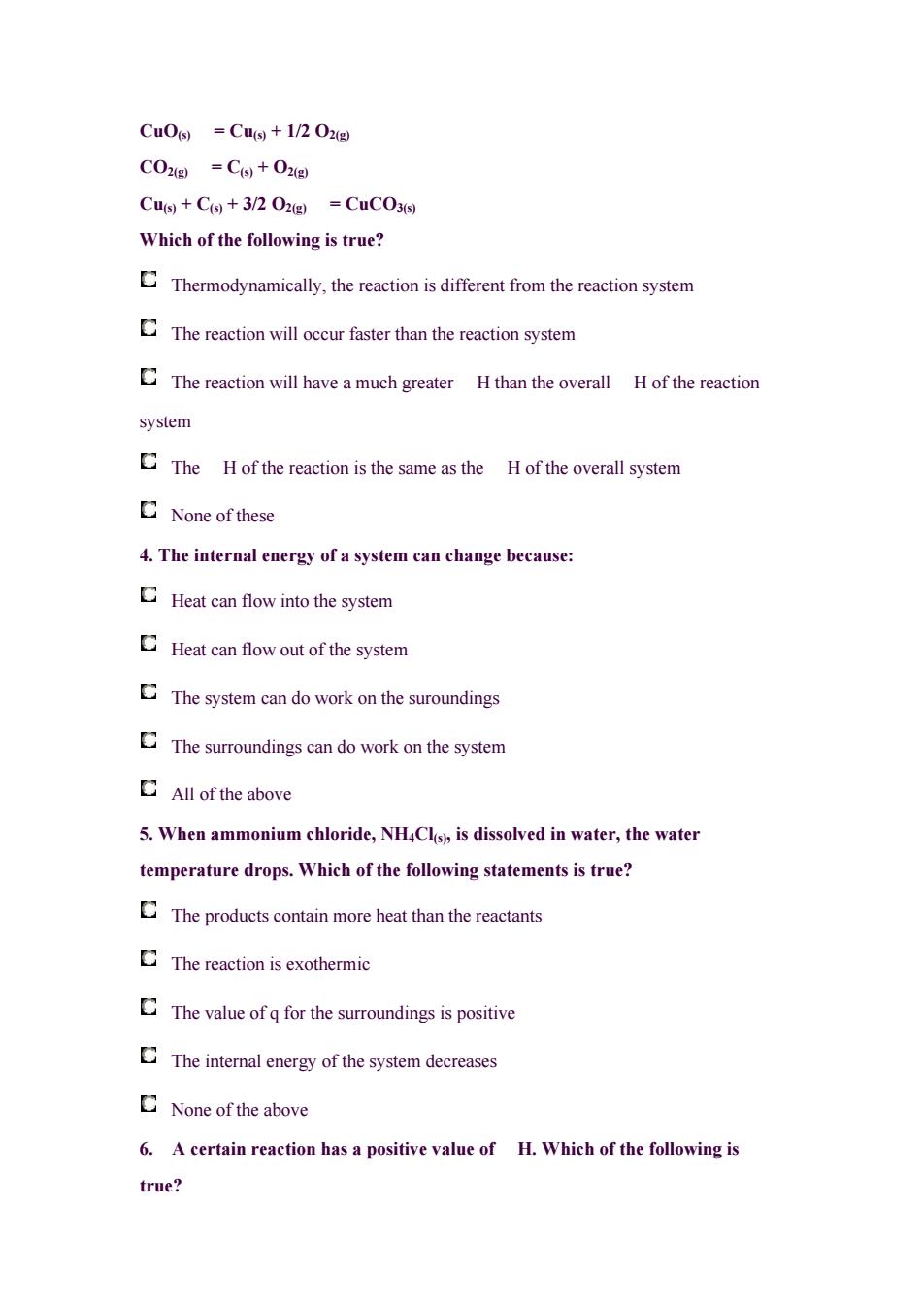正在加载图片...

CuO()Cu(s)+1/2 02(g) CO2(g)=C()+02g) Cus)+C()+3/2 02(g)=CuCO3(s) Which of the following is true? Thermodynamically,the reaction isdiffern from the reaction system Thereaction will cr faster than the reaction system The reaction will have a much greater Hthan the overall Hof the reaction system The Hofthe reaction is the same as the Hof the overall system None of these 4.The internal energy of a system can change because: Heat can flow into the system Heat can flow out of the system The system can do work on the suroundings The surounding can do work on the system All of the above 5.When ammonium chloride,NHaCls)is dissolved in water,the water temperature drops.Which of the following statements is true? heat than the reactants The reaction is exothermie The value of for the surroundings is positive The internal energy of the system decreases None of the above 6.A certain reaction has a positive value of H.Which of the following is true? CuO(s) = Cu(s) + 1/2 O2(g) CO2(g) = C(s) + O2(g) Cu(s) + C(s) + 3/2 O2(g) = CuCO3(s) Which of the following is true? Thermodynamically, the reaction is different from the reaction system The reaction will occur faster than the reaction system The reaction will have a much greater H than the overall H of the reaction system The H of the reaction is the same as the H of the overall system None of these 4. The internal energy of a system can change because: Heat can flow into the system Heat can flow out of the system The system can do work on the suroundings The surroundings can do work on the system All of the above 5. When ammonium chloride, NH4Cl(s), is dissolved in water, the water temperature drops. Which of the following statements is true? The products contain more heat than the reactants The reaction is exothermic The value of q for the surroundings is positive The internal energy of the system decreases None of the above 6. A certain reaction has a positive value of H. Which of the following is true?